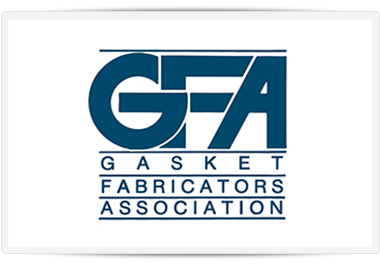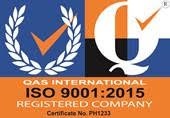The 10 Characteristics of Elastomers
Discover the 10 characteristics of elastomers using our informative table. Contact us to for help deciding which characteristics your die cut materials need.
See the 10 different elastomer characteristics in the table below.
| 1 | 2 | 3 | 4 | 5 | 6 | 7 | 8 | 9 | 10 |
|---|---|---|---|---|---|---|---|---|---|---|
Common Name | NR Natural Rubber | IR Synthetic Rubber | SBR | IIR Butyl | EPR EP Rubber | CR Neoprene | NBR | Polyurethane | Silicone | Fluro Elastromers |
Chemical Name | Natural Polyisoprene | Synthetic Polyisoprene | Styrene Butadiene | Isobutylene Isoprene | Ethylene Propylene | Chloroprene | Nitrile Butadene | Polyurethane Diisocyanate | Polysiloxane | Fluorinated Hydrocarbon |
ASTM-SAE Designation | Type R - no contact with petroleum-base fluids | Type R - no contact with petroleum-base fluids | Type R - no contact with petroleum-base fluids | Type R - no contact with petroleum-base fluids | Type R - no contact with petroleum-base fluids | Type SC - medium-oil resistance | Type SB - Good oil resistance | None yet assigned | Type TA - Broad temperature range | Type TB - Resistance to elevated temperature and solvents |
Relative Cost SBR = 100 | 61 | 100 | 100 | 125 | 100 | 125 | 140 | 500 | 3000 | 1000 |
Advantages | Mostly used for high mechanical performance unless some specific environmental condition prohibits. Mostly used for high mechanical performance unless some specific environmental condition prohibits. | Resistant to abrasion, impact | Outstanding gas impermeability Good damping at normal temp. Resists aging at high temp. Resistant to ozone, alcohol diester lubes | Resistant to heat aging, oxidation, ozone, acids, alkalis, hydraulic fluids.Good electrical properties. | Resistant to weather, ozone, gasoline, oil, elevated temperature, Flame resistant | Good physicals Resistant to gasoline, oil, elevated temperatures. | Highest available abrasion resistance, strength and load bearing.High elongation, hardness.Resistant to oxygen and ozone. | Broadest available temperature range. Retain properties over temperature range. Resistant to aging, ozone, oil. Good flex resistance. | Outstanding resistance to oxygen, ozone, most solvents. Retains properties for long exposure to high temperature. Flame resistant Low permeability | |
Disadvantages | Affected by heat, aging, sunlight, oxygen, ozone, gasoline and oil. Aromatic hydrocarbons, degreaser solvents, silicate hydraulic fluids. Affected by heat, aging, sunlight, oxygen, ozone, gasoline and oil. Aromatic hydrocarbons, degreaser solvents, silicate hydraulic fluids. | Affected by heat aging, ozone, hydrocarbon solvents, and oil. Only fair electrical properties. Good physical properties Requires reinforcement. | Affected by gasoline, oil, degreaser solvents. Low resilience Medium physical properties | Affected by aromatic and aliphatic solvents. Poor tear resistance. | Affected by aromatic hydrocarbons, phosphate, and hydraulic fluids. | Affected by degreaser solvents Good Physicals Requires reinforcement | Affected by acid, alkalis, aromatics, and esters. Good performance only with high hardness. | Low physical properties at room temperature. Affected by gasoline, degreaser and solvents (Note: Special fluorinated silicone resists fuels, solvents and oils) | Poor dynamic properties at low temperatures | |
Typical Trade Names | N/A | Ameripol SN Natsyn Isoprene | Philprene Ameripol SBR Plioflex Naugopol Poyser S S-Polymers Synpol Baytown Copo FR-S ASRC | Enjay Butyl Polysar Butyl Bucar Petrotex Butyl | Nordel Royalene Vistalon Epsyn | Hycar Chemgum Paracril Polysar Krynac FR-N | Adiprene Chemigum SL Texin Vibrathane Elastothan Genthane Esthane | Silastic G.E. Silicones U.C. Silicones Si-O-Flex | Viton Fluorel Kel-F Elastomer | |
| 1 | 2 | 3 | 4 | 5 | 6 | 7 | 8 | 9 | 10 |
|---|---|---|---|---|---|---|---|---|---|---|
Common Name | NR Natural Rubber | IR Synthetic Rubber | SBR | IIR Butyl | EPR EP Rubber | CR Neoprene | NBR | Polyurethane | Silicone | Fluro Elastromers |
Chemical Name | Natural Polyisoprene | Synthetic Polyisoprene | Styrene Butadiene | Isobutylene Isoprene | Ethylene Propylene | Chloroprene | Nitrile Butadene | Polyurethane Diisocyanate | Polysiloxane | Fluorinated Hydrocarbon |
ASTM-SAE Designation | Type R - no contact with petroleum-base fluids | Type R - no contact with petroleum-base fluids | Type R - no contact with petroleum-base fluids | Type R - no contact with petroleum-base fluids | Type R - no contact with petroleum-base fluids | Type SC - medium-oil resistance | Type SB - Good oil resistance | None yet assigned | Type TA - Broad temperature range | Type TB - Resistance to elevated temperature and solvents |
Relative Cost SBR = 100 | 61 | 100 | 100 | 125 | 100 | 125 | 140 | 500 | 3000 | 1000 |
Advantages | Mostly used for high mechanical performance unless some specific environmental condition prohibits. | Mostly used for high mechanical performance unless some specific environmental condition prohibits. | Resistant to abrasion, impact | Outstanding gas impermeability Good damping at normal temp. Resists aging at high temp. Resistant to ozone, alcohol diester lubes | Resistant to heat aging, oxidation, ozone, acids, alkalis, hydraulic fluids.Good electrical properties. | Resistant to weather, ozone, gasoline, oil, elevated temperature, Flame resistant | Good physicals Resistant to gasoline, oil, elevated temperatures. | Highest available abrasion resistance, strength and load bearing.High elongation, hardness.Resistant to oxygen and ozone. | Broadest available temperature range. Retain properties over temperature range. Resistant to aging, ozone, oil. Good flex resistance. | Outstanding resistance to oxygen, ozone, most solvents. Retains properties for long exposure to high temperature. Flame resistant Low permeability |
Disadvantages | Affected by heat, aging, sunlight, oxygen, ozone, gasoline and oil. Aromatic hydrocarbons, degreaser solvents, silicate hydraulic fluids. | Affected by heat, aging, sunlight, oxygen, ozone, gasoline and oil. Aromatic hydrocarbons, degreaser solvents, silicate hydraulic fluids. | Affected by heat aging, ozone, hydrocarbon solvents, and oil. Only fair electrical properties. Good physical properties Requires reinforcement. | Affected by gasoline, oil, degreaser solvents. Low resilience Medium physical properties | Affected by aromatic and aliphatic solvents. Poor tear resistance. | Affected by aromatic hydrocarbons, phosphate, and hydraulic fluids. | Affected by degreaser solvents Good Physicals Requires reinforcement | Affected by acid, alkalis, aromatics, and esters. Good performance only with high hardness. | Low physical properties at room temperature. Affected by gasoline, degreaser and solvents (Note: Special fluorinated silicone resists fuels, solvents and oils) | Poor dynamic properties at low temperatures |
Typical Trade Names | N/A | Ameripol SN Natsyn Isoprene | Philprene Ameripol SBR Plioflex Naugopol Poyser S S-Polymers Synpol Baytown Copo FR-S ASRC | Enjay Butyl Polysar Butyl Bucar Petrotex Butyl | Nordel Royalene Vistalon Epsyn | Neoprene | Hycar Chemgum Paracril Polysar Krynac FR-N | Adiprene Chemigum SL Texin Vibrathane Elastothan Genthane Esthane | Silastic G.E. Silicones U.C. Silicones Si-O-Flex | Viton Fluorel Kel-F Elastomer |
NOTE: The chart shown here is intended as a general guide only. The characteristics and physical properties can be altered within each elastomer group by specifically compounding for a particular requirement.





